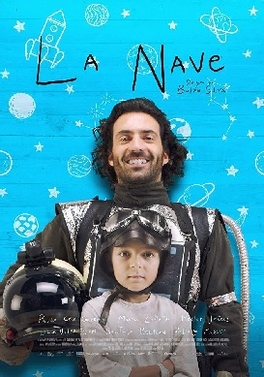La nave (film)
La nave is a 1943 Italian film directed by Roberto Rossellini. The film is a drama set during World War II and follows the story of a group of Italian soldiers stranded on a Greek island after the armistice between Italy and the Allies. The soldiers must navigate the challenges of survival and conflicting loyalties in the midst of war.
Plot[edit | edit source]
The film begins with the Italian soldiers finding themselves isolated on the island following the armistice. As they struggle to survive, tensions rise among the group as they grapple with their allegiance to their country and their own moral compass. The soldiers must confront the harsh realities of war and the complexities of human nature as they face difficult decisions that will test their loyalty and integrity.
Production[edit | edit source]
La nave was directed by Roberto Rossellini and written by Rossellini and Sergio Amidei. The film was produced during a tumultuous period in Italian history, reflecting the uncertainty and moral dilemmas faced by individuals during wartime. Rossellini's innovative approach to storytelling and his focus on human emotions and relationships set La nave apart from traditional war films of the time.
Cast[edit | edit source]
The cast of La nave includes: - Massimo Girotti as Lieutenant - Elli Parvo as Maria - Dria Paola as Sergeant - Vito Annichiarico as Soldier
Reception[edit | edit source]
Upon its release, La nave received critical acclaim for its powerful storytelling and realistic portrayal of the human experience during wartime. The film was praised for its nuanced characters and thought-provoking themes, solidifying Rossellini's reputation as a pioneering filmmaker in Italian cinema.
Legacy[edit | edit source]
La nave is considered a classic of Italian cinema and a significant work in Roberto Rossellini's filmography. The film's exploration of morality, loyalty, and the impact of war continues to resonate with audiences and critics alike, cementing its status as a timeless piece of cinematic art.
Search WikiMD
Ad.Tired of being Overweight? Try W8MD's physician weight loss program.
Semaglutide (Ozempic / Wegovy and Tirzepatide (Mounjaro / Zepbound) available.
Advertise on WikiMD
|
WikiMD's Wellness Encyclopedia |
| Let Food Be Thy Medicine Medicine Thy Food - Hippocrates |
Translate this page: - East Asian
中文,
日本,
한국어,
South Asian
हिन्दी,
தமிழ்,
తెలుగు,
Urdu,
ಕನ್ನಡ,
Southeast Asian
Indonesian,
Vietnamese,
Thai,
မြန်မာဘာသာ,
বাংলা
European
español,
Deutsch,
français,
Greek,
português do Brasil,
polski,
română,
русский,
Nederlands,
norsk,
svenska,
suomi,
Italian
Middle Eastern & African
عربى,
Turkish,
Persian,
Hebrew,
Afrikaans,
isiZulu,
Kiswahili,
Other
Bulgarian,
Hungarian,
Czech,
Swedish,
മലയാളം,
मराठी,
ਪੰਜਾਬੀ,
ગુજરાતી,
Portuguese,
Ukrainian
Medical Disclaimer: WikiMD is not a substitute for professional medical advice. The information on WikiMD is provided as an information resource only, may be incorrect, outdated or misleading, and is not to be used or relied on for any diagnostic or treatment purposes. Please consult your health care provider before making any healthcare decisions or for guidance about a specific medical condition. WikiMD expressly disclaims responsibility, and shall have no liability, for any damages, loss, injury, or liability whatsoever suffered as a result of your reliance on the information contained in this site. By visiting this site you agree to the foregoing terms and conditions, which may from time to time be changed or supplemented by WikiMD. If you do not agree to the foregoing terms and conditions, you should not enter or use this site. See full disclaimer.
Credits:Most images are courtesy of Wikimedia commons, and templates Wikipedia, licensed under CC BY SA or similar.
Contributors: Prab R. Tumpati, MD

